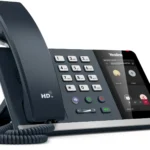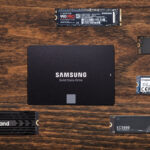Can You Carry a Power Bank on a Plane in Kenya? Your Complete 2025 Guide

You’re at JKIA security. Dead phone. Power bank in checked luggage. Gate agent pulls you aside. Your device gets confiscated.
This happens to Kenyan travelers every single day—not because they’re careless, but because nobody explained the rules clearly.
Why This Product Matters for Kenyan Travelers
Here’s the brutal truth: Your phone dying mid-flight isn’t just inconvenient anymore. It’s a legitimate travel emergency.
- Business professionals miss critical client calls during layovers.
- Students lose access to boarding passes and accommodation bookings.
- Families can’t coordinate pickups at arrival airports.
- Content creators watch their devices drain while documenting their journeys.
The solution?
A properly rated power bank that follows aviation regulations. But here’s what nobody tells you: Not all power banks are created equal, and the wrong one will get tossed at security—costing you money and leaving you stranded.
Let me cut through the confusion and show you exactly what works in 2025.
The Simple Answer: Yes, But Only in Your Carry-On
Kenya Airways explicitly states that power banks are considered spare batteries and must be carried in carry-on baggage only. This policy aligns with other major carriers operating in Kenya—power banks with a capacity under 160Wh are permitted in hand luggage.
Here’s what actually happens at Kenyan airports:
- ✅ Carry-on luggage: Power banks allowed (with capacity limits)
- ❌ Checked baggage: Automatic confiscation, no exceptions
- ⚠️ Smart luggage with built-in batteries: Battery must be removable
The Transportation Security Administration and Federal Aviation Administration prohibit power banks in checked baggage due to fire risks associated with lithium-ion batteries.
Understanding Capacity Limits: The Numbers That Actually Matter
Airlines don’t care about your power bank’s brand or color. They care about one number: watt-hours (Wh).
Most power banks list capacity in milliampere-hours (mAh), but airlines regulate battery limits using watt-hours because this measurement accurately reflects fire risk potential.
The Conversion Formula (Simple Math)
Wh = (mAh × Voltage) ÷ 1000
Most lithium-ion batteries operate at 3.6V–3.7V, so here’s what common capacities actually mean:
| mAh Capacity | Wh Equivalent | Approval Needed? | Kenya Airways Status |
|---|---|---|---|
| 5,000 mAh | ~18.5 Wh | No | ✅ Allowed |
| 10,000 mAh | ~37 Wh | No | ✅ Allowed |
| 20,000 mAh | ~74 Wh | No | ✅ Allowed |
| 27,000 mAh | ~100 Wh | No | ✅ Allowed |
| 30,000 mAh | ~111 Wh | Yes—airline approval | ⚠️ Requires permission |
| 43,000+ mAh | 160+ Wh | Not allowed | ❌ Banned |
Pro tip: Power banks under 27,000mAh (approximately 100Wh) require no airline approval. This is your sweet spot for hassle-free travel.
Which Power Bank for Your Travel Style?
The Weekend Warrior (Nairobi to Mombasa)
Your needs: Quick coastal getaway, 2-3 devices, light packing
Recommended capacity: 10,000 mAh (37Wh)
This is the goldilocks zone for domestic Kenyan flights. Fits in your pocket, charges your phone 2-3 times, and sails through JKIA security without a second glance. Perfect for that Friday evening KQ flight to Diani Beach.
- Budget pick: Entry-level 10,000mAh units (KSh 1,500-2,500) with single USB-C port
- Mid-range: Fast-charging models (KSh 3,000-4,500) with dual ports
- Premium: Slim design with wireless charging (KSh 5,500-8,000)
The Business Traveler (Nairobi to Dubai/London)
Your needs: Long-haul flights, laptop + phone + tablet, multiple charges
Recommended capacity: 20,000 mAh (74Wh)
You’re running between meetings, presentations, and conference calls. A 20,000mAh unit provides enough power for 4-5 phone charges or one charge for a MacBook Air—critical when you’re managing deals across time zones.
The objection: “Isn’t 20K too heavy?”
Modern 20,000mAh power banks weigh 300-400 grams—less than a bottle of water. The productivity you maintain is worth every gram.
- Budget pick: Basic 20,000mAh (KSh 2,800-4,200) with standard charging speeds
- Mid-range: 65W PD output models (KSh 5,500-7,500) that fast-charge laptops
- Premium: Multi-device chargers (KSh 9,000-12,000) with built-in cables
The Digital Nomad (Extended Africa Travel)
Your needs: Multiple countries, unreliable power, camera equipment, extended off-grid periods
Recommended capacity: Two 10,000-20,000 mAh power banks
Here’s the strategy nobody talks about: Two mid-size packs beat one large pack for international routes—you gain redundancy, can share with travel partners, and can recharge one while using the other during layovers.
Why two instead of one 30K unit?
- No airline approval hassles
- Charge simultaneously at airport lounges
- Backup if one gets damaged
- Share with fellow travelers
- Budget pick: Two 10K units (KSh 3,000-5,000 total)
- Mid-range: Two premium 15-20K units (KSh 10,000-14,000 total)
- Premium: Mix of capacities for different devices (KSh 15,000+)
Kenya-Specific Airline Regulations (What Actually Happens at JKIA)
Kenya Airways Official Policy
Kenya Airways requires spare batteries to be individually protected to prevent short circuits through original retail packaging or by insulating terminals, such as taping over exposed terminals or placing each battery in a separate plastic bag or protective pouch.
Translation: Don’t just throw your power bank loose in your bag. Protect the ports.
What About Other Airlines Operating in Kenya?
Emirates permits power banks up to 100Wh in carry-on luggage with protective packaging, while Qatar Airways requires insulated packaging for power banks up to 100Wh capacity.
The pattern: Every major carrier follows the same basic rules—100Wh limit, carry-on only, protected terminals.
Recent 2025 Rule Changes You Need to Know
Aviation regulations evolved after safety incidents in early 2025. Some Asian carriers now prohibit using power banks to charge devices during flights, and several airlines require passengers to keep power banks within arm’s reach rather than in overhead bins.
Before your Kenya Airways or Emirates flight:
- Check the airline’s website 24-48 hours before departure
- Note any in-flight charging restrictions
- Confirm current Wh limits for your specific route
Common Objections (And Why They’re Wrong)
“These capacity limits are too small for my needs”
A 10,000mAh power bank can recharge most phones nearly twice, with efficiency rates delivering 70-80% of the stated capacity to your device. That’s a full day of heavy use.
If you genuinely need more, carry two 20K units instead of gambling with a 40K brick that’ll get confiscated.
“Quality power banks are too expensive”
You know what’s expensive? Replacing a phone because it died and you missed your connecting flight. Or buying an overpriced airport power bank at 3x retail price during a layover.
A proper 10,000mAh power bank costs KSh 2,000-4,000—the price of two airport coffees. The ROI on your first prevented travel disaster pays for itself instantly.
“I’ve never been stopped before, so regulations don’t matter”
You’re playing Russian roulette with your travel plans. Security protocols tightened significantly in 2025 after battery-related incidents. Airlines worldwide have strengthened regulations following a rise in battery-related incidents onboard, with aviation authorities now enforcing stricter safety protocols.
The question isn’t if you’ll get caught—it’s when.
Read also: 5 Best Travel Power Banks in Kenya: Your Complete 2025 Buying Guide
Technical Specifications That Actually Matter
When shopping for a travel-ready power bank, ignore the marketing fluff. Focus on these specs:
1. Capacity: 10,000-20,000 mAh Sweet Spot
Airline-compliant, multiple charges, portable
2. Output: Minimum 18W, Ideally 30W+
45W USB-C PD can charge smartphones to 50% in under 30 minutes—critical for quick airport top-ups
3. Input: Fast Recharge (18W+ Input)
High-efficiency USB-C input enables faster refills during layovers, maximizing your limited airport time
4. Safety Certifications: Look for UL 2056
Independent safety certifications like UL 2056 test for overcharging protection, drop resistance, and fire safety
5. Clear Labeling: Visible Wh Rating
Power banks without visible Wh or mAh labeling may be rejected during security screening—don’t risk it
6. Multiple Ports: Minimum Two USB Ports
One USB-C, one USB-A covers all device types
Step-by-Step: Packing Your Power Bank for Kenyan Flights
24 Hours Before Departure:
- ✅ Charge power bank to 50-80% (not fully charged—reduces stress on lithium cells during pressure changes)
- ✅ Verify Wh rating is clearly visible on the device
- ✅ Place in separate protective pouch or original packaging
- ✅ Screenshot airline’s baggage policy (show security if questioned)
At JKIA Security:
- ✅ Remove power bank from carry-on (place in screening tray with laptop/tablet)
- ✅ Keep accessible in case security asks to inspect
- ✅ Have device specs ready if questioned (Wh rating, manufacturer details)
- ✅ Power bank stays with you—never check it, even if asked
During Your Flight:
- ✅ Store in seat pocket or under seat (some airlines prohibit overhead storage)
- ✅ Keep powered off during takeoff/landing (airline-dependent)
- ✅ Check in-flight charging policies before plugging in
- ✅ Never leave in lavatory or seat pocket when deplaning
Power Bank Alternatives vs. Best Option Comparison
Power Bank vs. Charging at Airport Lounges
Airport charging: Free, but ties you to one location during layovers
Power bank advantage: Freedom to move, multiple charges, works on a plane.
Power Bank vs. Seat USB Ports
Seat USB: Most long-haul flights have USB ports, but output is typically limited to 5-10W—painfully slow
Power bank advantage: 3-6x faster charging, works when seat power fails (happens constantly)
Power Bank vs. Buying at Destination
Destination purchase: Risk of counterfeit products, unknown quality, higher prices.
Power bank advantage: Known capacity, tested reliability, immediate availability.
The winner: Quality power bank bought before travel. No contest.
Product Recommendations: What Actually Works for Kenyan Travelers
Entry-Level (KSh 1,500-3,000): Perfect for Weekend Trips
10,000mAh single-port models
- Basic fast charging (18W)
- Compact design
- 1-year warranty standard
Best for: Casual travelers, domestic flights, emergency backup
Mid-Range (KSh 3,500-7,500): The Business Traveler’s Choice
20,000mAh dual-port models with 30W+ output
- USB-C PD + USB-A
- Multiple device charging
- Faster recharge times
- 2-year warranty
Best for: Regular flyers, long-haul routes, multiple devices
Premium (KSh 8,000-15,000): Digital Nomad Essential
20,000mAh+ with 65W output and built-in cables
- Laptop-compatible charging
- Wireless charging capability
- GaN technology (cooler, more efficient)
- Premium build quality
- 2-3 year warranty
Best for: Tech professionals, content creators, extended travel
Where to buy: Browse certified power banks from verified sellers offering genuine products with warranty protection.
Frequently Asked Questions (What Kenyans Actually Ask)
Can I bring a 20,000mAh power bank on Kenya Airways? Yes—a 20,000mAh unit at 3.7V equals approximately 74Wh, well within the safe limit of 100Wh. No special approval needed.
What happens if my power bank doesn’t show Wh rating? Security agents may confiscate devices without visible labeling. Calculate it yourself: (mAh × 3.7V) ÷ 1000. Write it on the device if needed.
Do I need to declare my power bank at check-in? No declaration required for power banks under 100Wh. Just keep in carry-on and you’re clear.
Can I charge my power bank during the flight? Depends on the airline. Emirates, from October 2025, prohibits passengers from charging power banks in-flight via onboard USB ports. Check your specific carrier’s policy.
What if I accidentally pack my power bank in checked luggage? Security will confiscate any power bank found in checked luggage. It won’t just be flagged—it’ll be removed and disposed of. This is non-negotiable across all airlines.
How many power banks can I carry on Kenya Airways? Unlimited power banks under 100Wh, and up to two power banks between 100Wh and 160Wh with airline approval. Practically, 2-3 units under 20,000mAh raises no issues.
Delivery, Warranty, and Purchase Protection
What to Expect When Ordering Online in Kenya
Delivery timeframes:
- Nairobi Metro: 1-2 business days
- Major towns (Mombasa, Kisumu, Nakuru, Eldoret): 2-3 business days
- Remote areas: 3-5 business days
Warranty coverage:
- Entry-level: 12 months manufacturer warranty
- Mid-range: 18-24 months warranty
- Premium: 24-36 months warranty plus customer support
Purchase protection: Look for sellers offering:
- ✅ 7-14 day return window (unused items)
- ✅ Genuine product guarantee
- ✅ Local warranty service centers
- ✅ Responsive customer support
Red flags to avoid:
- ❌ No clear capacity labeling
- ❌ Suspiciously cheap (if it’s KSh 800 for “20,000mAh,” it’s fake)
- ❌ No brand identification
- ❌ Seller has no physical presence or contact info
Your Next Step: Making the Right Choice Today
Here’s what happens next:
If you’re traveling within 72 hours: Order a mid-range 10,000-20,000mAh power bank immediately. Prioritize fast shipping over extra features. Your travel stress depends on having this ONE device work properly.
If you’re planning ahead (1+ weeks): Invest in quality. Get two power banks in different capacities—one compact (10K) for day trips, one larger (20K) for international travel. This covers every scenario.
If you travel frequently (monthly): Premium is your only move. The time you save, connections you maintain, and devices you protect justify the investment 10x over.
Your action right now:
- Check your current power bank’s Wh rating (or calculate it)
- Browse airline-compliant power banks
- Order before your next trip—don’t risk traveling without backup power
The Bottom Line
Can you carry a power bank on a plane in Kenya? Absolutely—but only if you follow the rules.
The non-negotiables:
- ✅ Carry-on luggage only (never checked)
- ✅ Under 100Wh capacity (approximately 27,000mAh)
- ✅ Clear capacity labeling
- ✅ Protected terminals
- ✅ Powered off during takeoff/landing
The smart approach: Get a quality 10,000-20,000mAh power bank from a reputable seller, keep it in your carry-on, and never worry about dead devices again.
Your phone dying mid-travel isn’t a minor inconvenience anymore—it’s a legitimate emergency that costs you time, money, and opportunities. A proper power bank eliminates that risk for less than the cost of airport parking.
Make the investment. Protect your connectivity. Travel with confidence.
Ready to secure your travel power? Explore certified power banks with warranty protection and fast Kenya delivery.
Last updated: October 2025 | Sources: TSA Regulations, Kenya Airways Policies, Aviation Safety Guidelines, IATA Standards, Travel News Analysis
Read also:


 IP Phones & PBX
IP Phones & PBX
 Solid State Drive
Solid State Drive